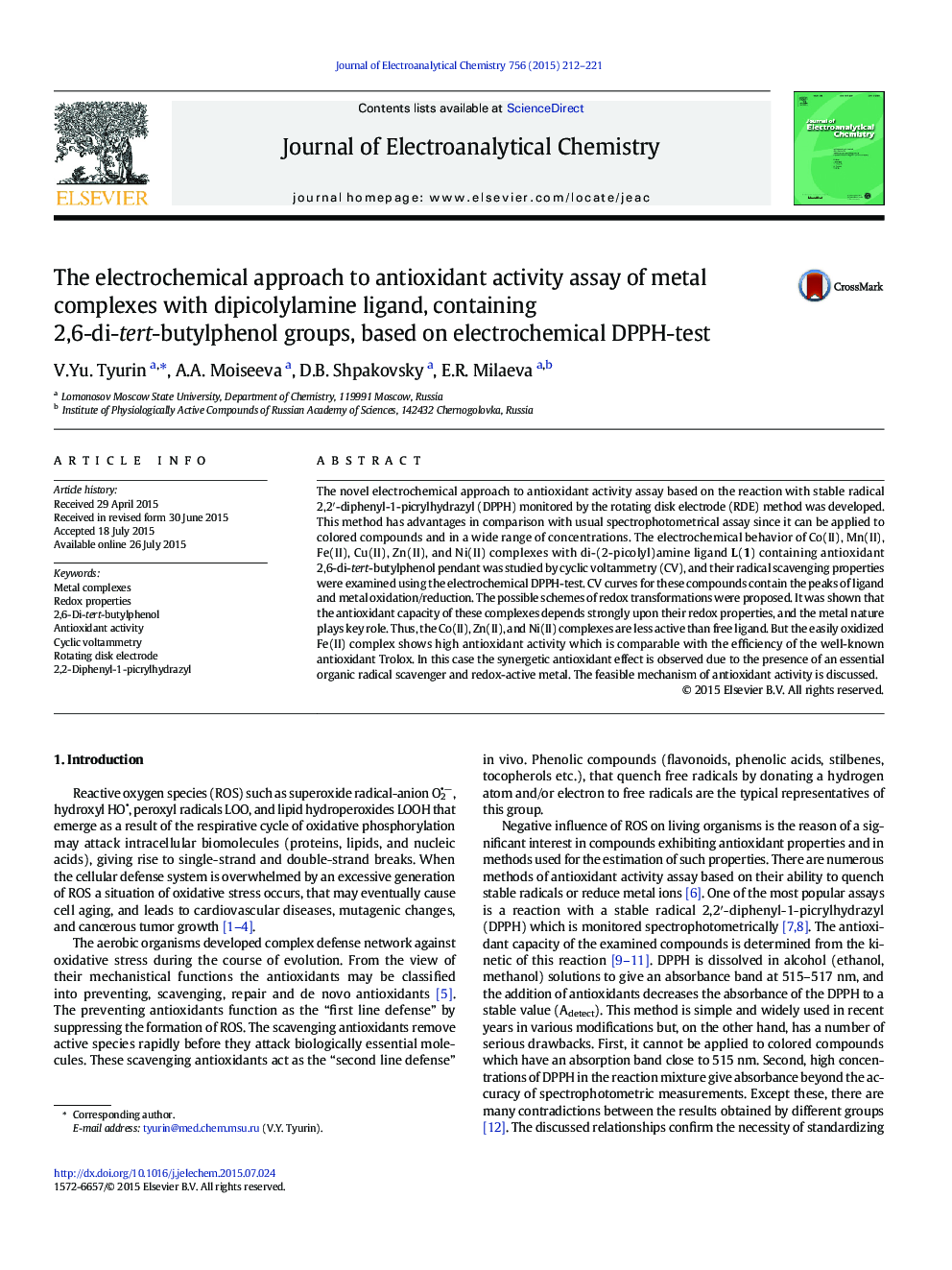| کد مقاله | کد نشریه | سال انتشار | مقاله انگلیسی | نسخه تمام متن |
|---|---|---|---|---|
| 218309 | 463191 | 2015 | 10 صفحه PDF | دانلود رایگان |

• The redox behavior of metal complexes with dipicolylamine ligand is studied.
• The possible schemes of electrochemical transformations are proposed.
• The novel electrochemical DPPH-test was used for antioxidant activity assay.
• The easily oxidized FeII complex demonstrates high antioxidant activity.
• The feasible mechanism of antioxidant action is proposed.
The novel electrochemical approach to antioxidant activity assay based on the reaction with stable radical 2,2′-diphenyl-1-picrylhydrazyl (DPPH) monitored by the rotating disk electrode (RDE) method was developed. This method has advantages in comparison with usual spectrophotometrical assay since it can be applied to colored compounds and in a wide range of concentrations. The electrochemical behavior of Co(II), Mn(II), Fe(II), Cu(II), Zn(II), and Ni(II) complexes with di-(2-picolyl)amine ligand L(1) containing antioxidant 2,6-di-tert-butylphenol pendant was studied by cyclic voltammetry (CV), and their radical scavenging properties were examined using the electrochemical DPPH-test. CV curves for these compounds contain the peaks of ligand and metal oxidation/reduction. The possible schemes of redox transformations were proposed. It was shown that the antioxidant capacity of these complexes depends strongly upon their redox properties, and the metal nature plays key role. Thus, the Co(II), Zn(II), and Ni(II) complexes are less active than free ligand. But the easily oxidized Fe(II) complex shows high antioxidant activity which is comparable with the efficiency of the well-known antioxidant Trolox. In this case the synergetic antioxidant effect is observed due to the presence of an essential organic radical scavenger and redox-active metal. The feasible mechanism of antioxidant activity is discussed.
Figure optionsDownload as PowerPoint slide
Journal: Journal of Electroanalytical Chemistry - Volume 756, 1 November 2015, Pages 212–221